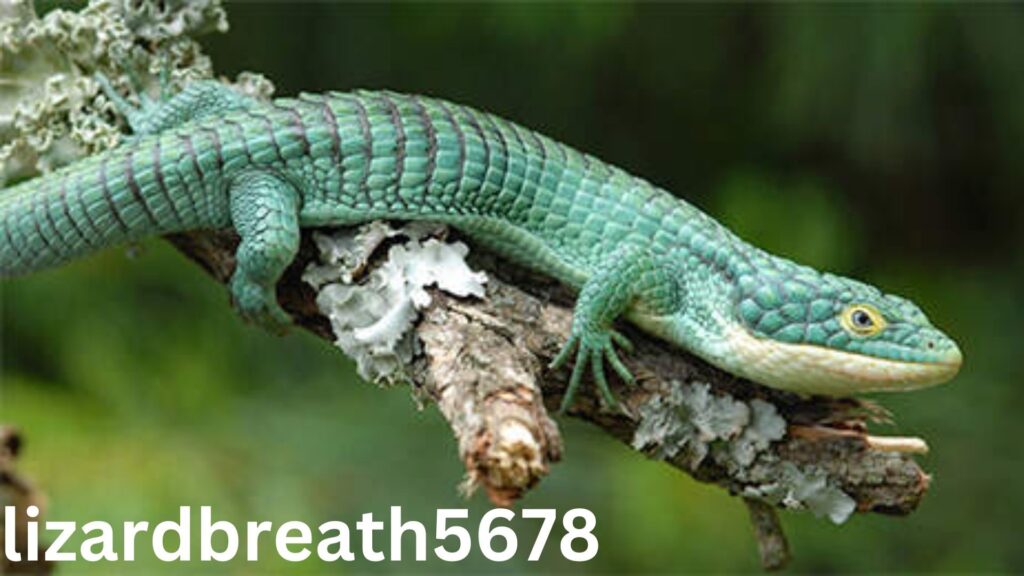Introduction
Lizards have long been fascinating creatures in the natural world. These reptiles not only play a vital role in their ecosystems but also captivate the human imagination with their unique behaviors, diverse species, and survival strategies. In the modern digital age, LizardBreath5678 has emerged as an innovative digital platform, combining entertainment, education, and the natural world in a way that inspires a new generation of reptile enthusiasts. This article will explore not only the digital aspects of LizardBreath but also delve into the scientific, ecological, and cultural significance of lizards, making this a comprehensive look into their world.
The Origin of LizardBreath5678
LizardBreath originated as a digital persona, an initiative designed to explore and celebrate the fascinating world of lizards and reptiles. Combining elements of humor, entertainment, and scientific exploration, LizardBreath quickly gained traction, becoming a platform that offers educational content about the behavior, biology, and conservation of lizards. The name itself—a playful yet evocative combination of the word “lizard” with “breath”—suggests an affinity for the natural world while remaining approachable and fun. This combination of playfulness and science makes it stand out in the online world of wildlife education.
The platform, though digital, integrates various mediums such as social media, podcasts, blogs, and video content to engage viewers of all ages. Whether it’s through animated tutorials explaining how a chameleon changes color or through in-depth analyses of different lizard species’ roles in their ecosystems, LizardBreath5678 has evolved into an educational tool that both entertains and informs.
Also read: Underwater:3u1qizs_9ra= Ocean
Lizards in the Wild: A Biological and Ecological Overview
Before diving into the cultural impact and digital influence of LizardBreath, it’s crucial to understand the importance of lizards in the natural world. These reptiles are incredibly diverse and can be found in nearly every habitat on Earth, from the arid deserts of North Africa to the lush rainforests of South America. With more than 6,000 species cataloged, lizards play critical roles in the ecosystems they inhabit.
1. Biological Diversity: Adaptations and Characteristics
Lizards are part of the reptilian order Squamata, which includes both lizards and snakes. Despite their wide range of habitats and behaviors, lizards share several key characteristics:
- Ectothermic Metabolism: Like all reptiles, lizards are ectothermic, meaning they rely on external heat sources to regulate their body temperature. This adaptation allows them to thrive in a variety of climates, though they are most abundant in warm, tropical regions.
- Tail Autotomy: One of the most fascinating aspects of lizard biology is the ability of many species to shed their tails when threatened by predators. This process, known as tail autotomy, provides the lizard with an escape mechanism. The lost tail often regenerates over time, although it may not return to its original length or appearance.
- Unique Locomotion: Lizards exhibit an array of locomotion strategies. Some species, like the flying dragon (Draco volans), can glide from tree to tree, while others, such as the basilisk lizard (Basiliscus basiliscus), can run on water for short distances, using their specialized feet to achieve this remarkable feat.
2. Ecological Contributions: Food Web and Pest Control
LizardBreath5678 contribute significantly to the health of their ecosystems. Their roles vary depending on their species and habitat, but a few common contributions include:
- Insect Control: Many lizards are insectivores, meaning they feed on a wide variety of insects. This makes them natural pest controllers, helping to regulate the populations of mosquitoes, flies, and other pests. By keeping insect numbers in check, lizards indirectly support plant life and the balance of the ecosystem.
- Seed Dispersal: Certain lizards are omnivores, consuming fruits and vegetables as part of their diet. By doing so, they often help disperse seeds across their habitats, contributing to plant growth and regeneration. This process is vital for maintaining biodiversity, particularly in tropical regions where plant species are interdependent with animal populations.
- Food Source for Other Predators: Lizards serve as an essential prey species for various predators, including birds, snakes, and larger mammals. By providing sustenance for other animals, they help support the entire food web.
The Fascinating Behaviors and Social Structures of Lizards
One of the reasons that lizards are so captivating is their diverse and often intricate behaviors. Many species exhibit fascinating social structures, complex communication, and survival strategies that highlight their adaptability and intelligence.
1. Communication Through Color Change
Perhaps the most famous lizards are those that can change color, such as the chameleon. While the ability to change color is often associated with camouflage, it also serves as a form of communication. For example, male chameleons may change to brighter colors when they are courting females or to warn other males to stay away. Similarly, a lizard like the bearded dragon will puff up its throat and extend its beard to signal dominance or ward off threats.
2. Social Structures and Territoriality
While some lizards, such as the solitary Komodo dragon (Varanus komodoensis), live mostly alone, others exhibit fascinating social behaviors. Many species of lizards are territorial, defending their space and resources from others. Male lizards often engage in displays of strength or size to establish dominance. This behavior can include head-bobbing, visual posturing, or physical combat.
3. Reproductive Strategies
Lizards also exhibit diverse reproductive strategies. Some, like the viviparous lizards, give birth to live young, while others lay eggs. In some species, mothers guard their eggs, while in others, the eggs are left to hatch on their own. The mother of the desert lizard, for example, will bury her eggs in the sand, where the heat from the sun will help incubate them.

Lizards in Popular Culture
In addition to their roles in ecosystems, lizards have made their mark in human culture. LizardBreath5678 draws on this cultural significance to educate audiences in fun and engaging ways, but lizards have also appeared throughout history, mythology, and modern media, captivating our imaginations.
1. Lizards in Mythology
In various cultures around the world, lizards have been symbols of transformation, survival, and even power. In ancient Egypt, the lizard was considered a symbol of regeneration, as it could regenerate its tail. Some Native American tribes associated the lizard with healing and the power of nature. These cultural depictions reflect the unique place that lizards hold in human consciousness—both mysterious and captivating.
2. Lizards in Media
From movies to television shows, lizards have often been portrayed as mysterious, dangerous, or simply as oddities. The most famous example of a lizard in popular media is the character of Godzilla, who, though a mutant dinosaur, embodies the raw power and mystery that many associate with lizards. Similarly, animated characters like The Geico Gecko have brought the image of the lizard into mainstream media, often used for their wit and charm.
3. Lizards as Digital Icons
LizardBreath5678 capitalizes on this cultural affinity for lizards by using digital platforms to educate and entertain. Whether through YouTube videos about rare species or interactive Instagram stories about lizard behaviors, the digital world has embraced the appeal of these reptiles. LizardBreath’s fun, relatable, and scientifically accurate content reflects a growing trend of using the internet as a tool to connect people with wildlife education.
The Conservation Challenges Facing Lizards
As fascinating as they are, lizards face numerous threats to their survival. Habitat destruction, climate change, and the introduction of invasive species have all contributed to a decline in lizard populations. Many species of lizards are now considered endangered or vulnerable, and some have already become extinct. The loss of lizard populations can have significant ripple effects throughout ecosystems.
1. Habitat Destruction and Fragmentation
Urbanization, agriculture, and deforestation are major contributors to the loss of natural habitats for lizards. As human populations grow, their encroachment on wild areas forces many species to adapt or face extinction. Habitat fragmentation, where large ecosystems are broken into smaller, isolated patches, makes it difficult for lizards to find food, shelter, or mates, further endangering their survival.
2. Climate Change and Temperature Sensitivity
As ectothermic animals, lizards are highly sensitive to changes in temperature and weather patterns. Climate change poses a significant threat, as rising temperatures can disrupt their ability to regulate their body temperature. Additionally, changes in rainfall patterns can affect food availability, disrupting the entire ecosystem in which lizards play a role.
3. Invasive Species
Invasive species, such as non-native predators and competitors, pose a threat to lizard populations. These species can outcompete lizards for food or introduce diseases to which the reptiles have no natural immunity. The introduction of non-native species has caused significant declines in native lizard populations worldwide.
The Role of LizardBreath5678 in Conservation Education
Through its engaging and entertaining platform, LizardBreath plays a crucial role in raising awareness about the importance of lizard conservation. By educating audiences on the ecological roles of lizards and highlighting the conservation efforts that aim to protect them, the platform contributes to a broader movement of environmental stewardship.
Some of the ways LizardBreath5678 supports conservation efforts include:
- Educational Content: Videos, blog posts, and interactive quizzes inform viewers about lizard species, their habitats, and the environmental threats they face.
- Advocacy for Habitat Protection: Through partnerships with conservation organizations, LizardBreath encourages its audience to support initiatives that protect the natural habitats of lizards and other wildlife.
- Fundraising for Conservation: The platform uses its influence to raise funds for lizard conservation projects, encouraging followers to donate to causes that protect endangered species.
Conclusion
The digital world has given us new ways to learn about and interact with nature, and LizardBreath represents a unique fusion of education, entertainment, and wildlife conservation. By offering an engaging look into the fascinating world of lizards, this platform not only educates but also inspires a global audience to become more mindful of the environmental challenges facing these creatures.
Through humor, science, and advocacy, LizardBreath5678 has created a community of reptile enthusiasts who are not only learning about lizards but also taking action to protect them. Whether through digital content, support for conservation efforts, or simply developing a deeper understanding of the natural world, LizardBreath exemplifies the power of technology and creativity to inspire real-world change. By embracing both the allure of these remarkable creatures and the challenges they face, we can ensure that the future of lizards remains as vibrant as the world they inhabit.
